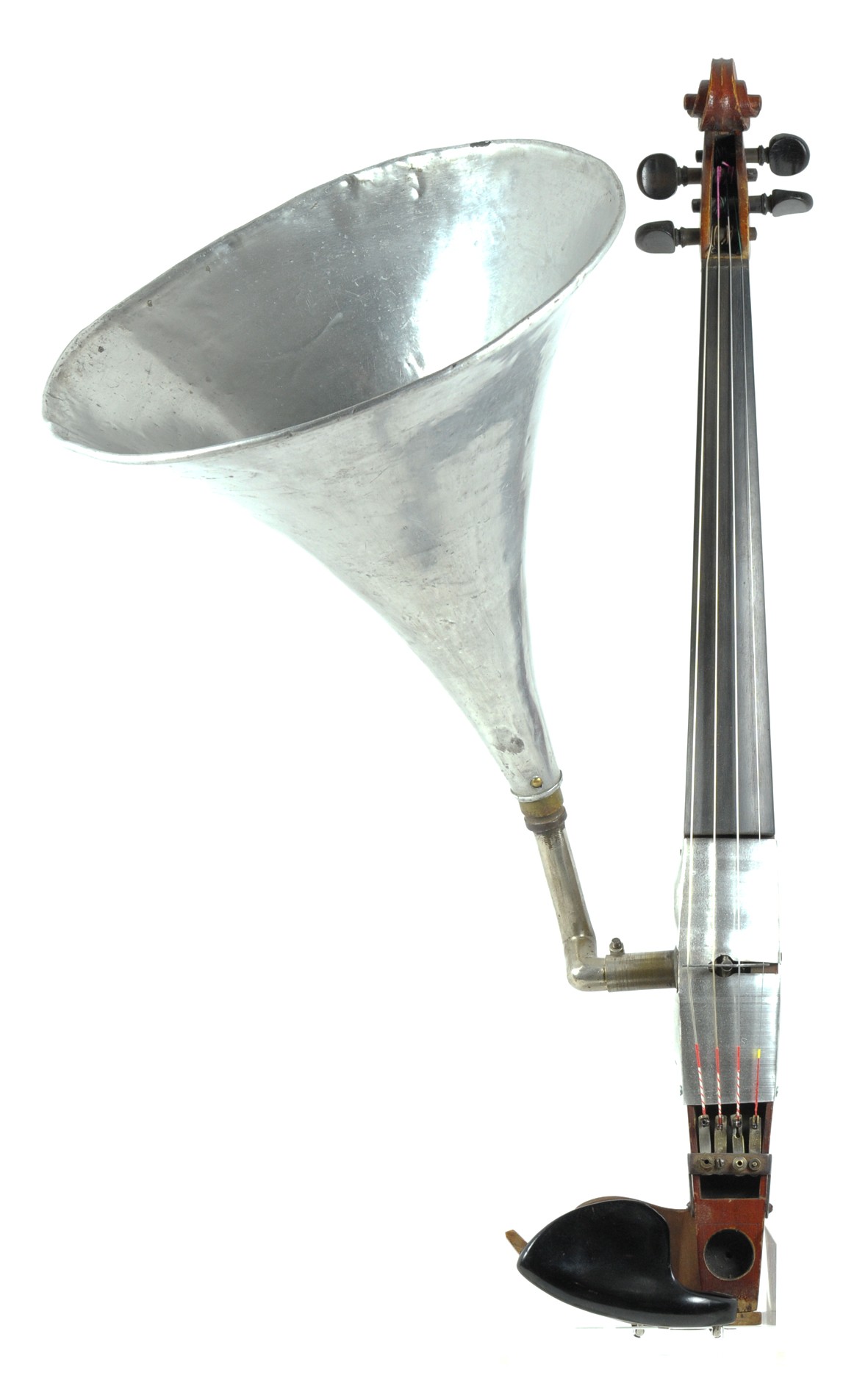Stroh violin Nr. 722 by Armin Sternberg, Budapest
This Stroh violin or "violinophone" is eye-catching and bizarre. It is a chimera of baroque violin-making tradition and cool precision mechanics — the perfect expression of a musical culture that had begun to take part in the scientific and technical revolution of the 19th century. In 1899, Johannes Matthias Augustus Stroh (1828-1914) from Frankfurt am Main...
This Stroh violin or "violinophone" is eye-catching and bizarre. It is a chimera of baroque violin-making tradition and cool precision mechanics — the perfect expression of a musical culture that had begun to take part in the scientific and technical revolution of the 19th century. In 1899, Johannes Matthias Augustus Stroh (1828-1914) from Frankfurt am Main began to develop this blend of a violin and gramophone as a response to the rising standards as well as the technical inadequacies of the record industry, which was then in its infancy. His instrument transfers the vibrations of the strings to a membrane that converts them into sound; an impressive-looking metal horn amplifies the sound in a manner that was indispensible for the recording technology of the time and not possible with standard violins. Stroh's innovation was rapidly applied to other instruments too: in keeping with the enthusiastic sense of discovery that was so widespread in his day, Stroh celli and guitars were soon created too, as were curiosities such as the “trombone harmonica.” The electric violin as we know it now was several years away, and its evolution is directly linked to that of the electric guitar, but nevertheless the Stroh violin may be considered its legitimate “parent” and forerunner. The instrument we are offering here was crafted in Budapest around 1910 by Ármin Sternberg (1861-1924). The royal manufacturer of the court's musical instruments was a pioneer in acoustic technology, a subject he had focused on intensely since 1890. In Europe he ranked among the commercial leaders in the field. This four-stringed violin has a small soundbox under the “body,” and on its side you can still see the original stamp “Sternberg BUDAPEST” and serial number 722. The instrument features a large and beautifully curved aluminium horn. Entrepreneurs like Sternberg played a key role in popularising the Stroh violin outside the studio as well. With its loud and unusual sound, it is still played by jazz, folk, tango and klezmer musicians today. Last but not least, it is an ideal instrument for street performers who can count on generating large crowds when they use it. We offer this rare piece of musical history in very well preserved condition and ready to play; it is ideal for collectors and musicians who appreciate the unusual.
- Inventory no.
- 2059
- Maker
- Armin Sternberg
- Provenance
- Budapest
- Year
- 1910 circa
- Length of back
- 36.0 cm



